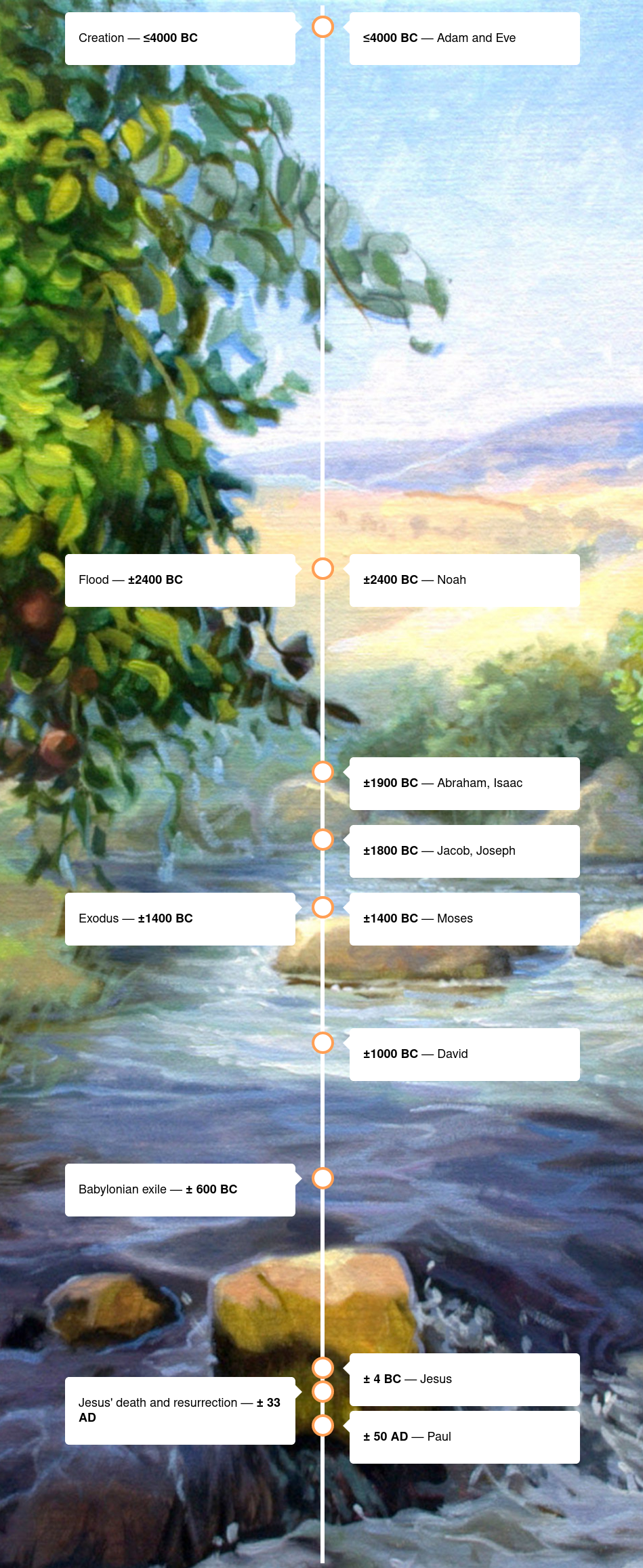
The picture below gives you a summary of several significant Biblical events:

Since the Bible was written millennia ago, the events it describes must have happened in the distant past as well. But when precisely? It’s not always simple to define it.
Dating system
The commonly used systems of “BC” (before Christ) and “AD” (anno Domini, which counts the years following Christ’s birth and is also known as Common Era (CE)) are not used to date events in the Bible. Naturally, it was impossible to count down and write something like “This and this happened to me 450 years BC” because the exact year of Jesus Christ’s birth was unknown. If we want to adopt a general dating system, we have to convert dates because the majority of Biblical events happened before the birth of Jesus.
Relative dating
Most events are only dated in relation to another event. For example, Genesis 7:11 states that “all the fountains of the great deep burst forth on the seventeenth day of the month, in the sixth year of Noah’s life, and the windows of the heavens were opened,” or Micah 1:1 describes the word of the Lord that came to Micah of Moresheth during the reigns of Jotham, Ahaz, and Hezekiah, kings of Judah.
This information only helps us to date the flood if we know when Noah was born; and if we want to date Micah’s prophecies we need to know when those kings reigned. Sometimes it is possible to trace back this information.
We can, for example, estimate the date of the flood by adding up the ages at which people got their first child: “When Adam had lived 130 years, he fathered a son in his own likeness, after his image, and named him Seth […] When Seth had lived 105 years, he fathered Enosh […] When Enosh had lived 90 years, he fathered Kenan …” and so on (Genesis 5). But if some information is missing, it may be hard to determine when exactly some person lived or some event happened.
Different focus
Biblical writers did not always prioritize precisely when events occurred. For instance, it is not stated in the book of Job when this man lived. It appears that the author did not think this information was necessary to get his point across. This means that in order to date this book, we must “ask” for information that isn’t present and rely on oblique hints found in the text or other sources. Furthermore, even documents such as genealogies may merely highlight a person’s most significant ancestors rather than listing every single one of them. If we wish to compare lists and use them to date individuals or events, this may get problematic.
Missing external clues
Certain events happened so long ago that there aren’t many outside indicators to date them, such as artifacts from archaeology or records from the present. This is especially pertinent to creation-related inquiries. Although it may have been longer, we may be very certain that the world was created at least 4000 years before Jesus Christ was born.
As a result, the summary above uses a lot of “≠” and “≤” to indicate that this is an estimate and that the event may have happened earlier. However, in spite of these challenges and ambiguities surrounding chronological facts, the overall framework of Biblical history can assist us in comprehending the context of specific individuals and events.





